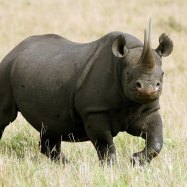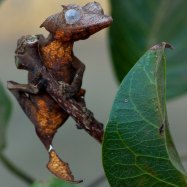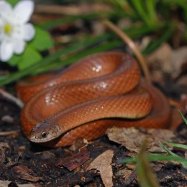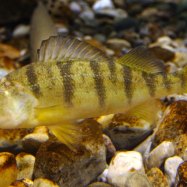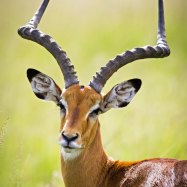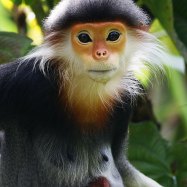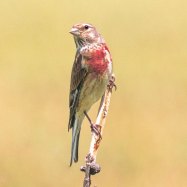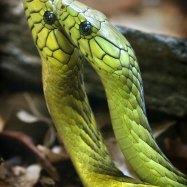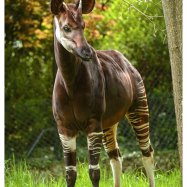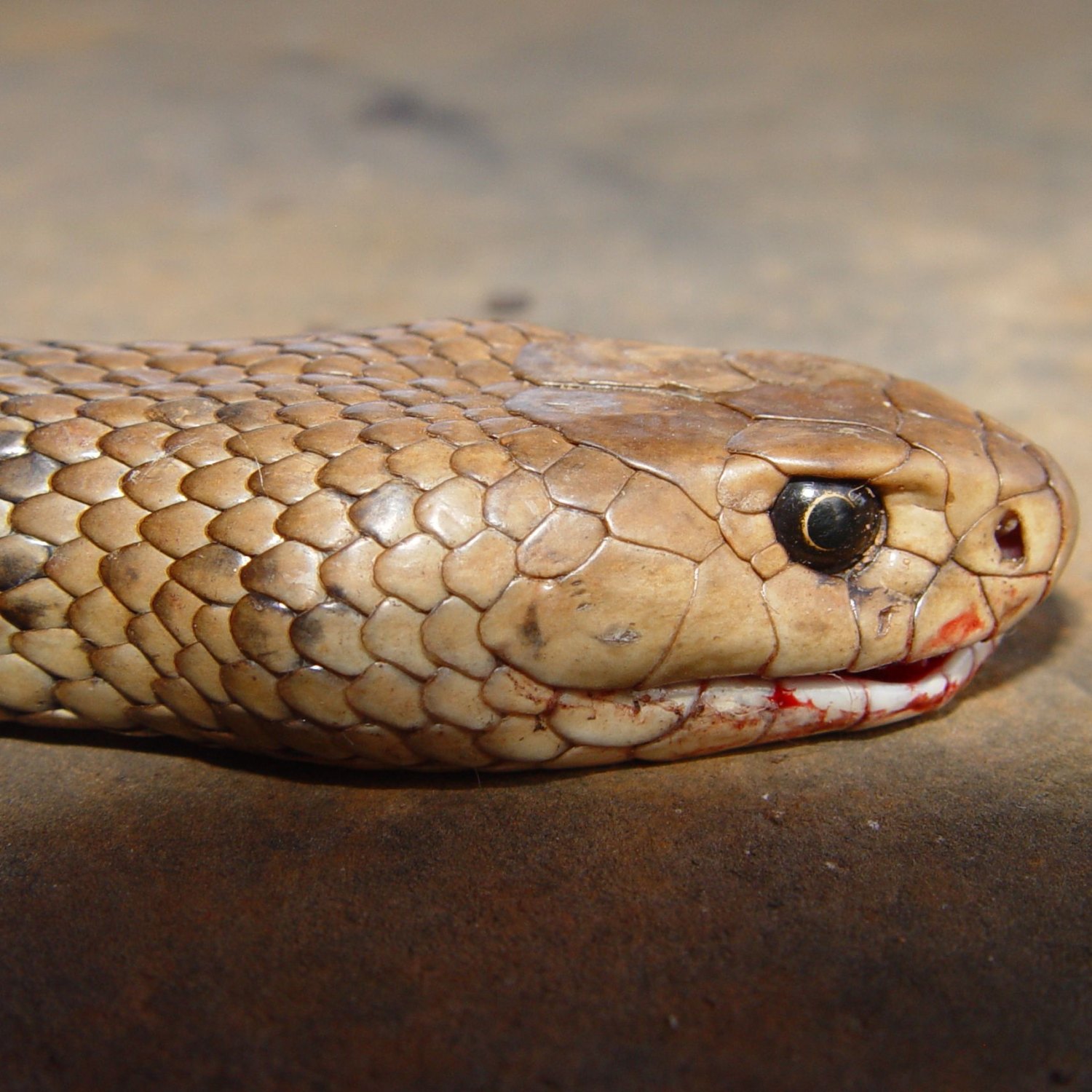
Eastern Brown Snake
1.5 to 2.2 meters
The Eastern Brown Snake, also known as Common Brown Snake or Eastern Tiger Snake, is a highly venomous reptile that can grow up to 2.2 meters in length. Found in Eastern and central Australia, it is a member of the Elapidae family and has a slender and elongated body shape. Be cautious when you encounter this snake as its bite can be fatal. Stay safe and keep your distance from these dangerous creatures.
Animal Details Summary:
Common Name: Eastern Brown Snake
Kingdom: Animalia
Habitat: Grasslands, woodlands, forests, coastal areas
The Deadly and Fascinating Eastern Brown Snake
Reptiles have long been a subject of fascination and awe for humans. From ancient myths to modern-day science, these scaly creatures have captured our imagination with their unique physical characteristics and behavior. And one such reptile that commands both respect and fear is the Eastern Brown Snake.The Eastern Brown Snake is a highly venomous species that belongs to the Elapidae family, and its scientific name is Pseudonaja textilis Eastern Brown Snake. It is commonly known as the Eastern Brown Snake and is a native of Australia, being found mainly in the eastern and central parts of the country. With a formidable reputation as one of the world's deadliest snakes, the Eastern Brown Snake is an animal that demands our attention.
The Eastern Brown Snake's Habitat
The Eastern Brown Snake is a versatile reptile that can thrive in a variety of habitats, including grasslands, woodlands, forests, and even coastal areas. This adaptability has helped it spread across a large part of Australia, making it one of the most widespread snake species in the country. These snakes are found in different types of terrain, from the arid outback to the lush rainforests, and are highly adaptable to environmental changes.Feeding Habits of the Eastern Brown Snake
Like most snakes, the Eastern Brown Snake is a carnivore, which means it feeds primarily on other animals. Its diet mainly consists of small mammals, birds, and reptiles, but it has also been known to consume larger prey like rabbits and small marsupials. As a predator, the Eastern Brown Snake uses its superbly camouflaged body and stealthy movements to sneak up on its prey and strike with deadly precision.The Geographical Distribution of the Eastern Brown Snake
The Eastern Brown Snake is endemic to Australia and is found in the eastern and central parts of the country Eurasian Eagle Owl. It has a wide distribution, with its range covering almost the entire eastern coast of Australia, from Queensland to South Australia. It is also found in some parts of Western Australia, although it is relatively rare in that region.The Appearance and Physical Characteristics of the Eastern Brown Snake
The Eastern Brown Snake is a stunning creature, with its body being variable shades of brown, ranging from pale tan to dark brown. This color variation is a result of its highly adaptable nature, with the Eastern Brown Snake changing its color to blend in with its surroundings. This skillful camouflage technique makes it difficult for predators and prey to spot the snake.The body of the Eastern Brown Snake is elongated and slender, giving it a sleek and streamlined appearance. It can grow up to 1.5 to 2.2 meters in length, making it one of the longest venomous snakes in Australia. It has a distinct triangular shaped head, which is characteristic of most venomous snakes. The Eastern Brown Snake also has small eyes and a short, blunt tail, which is not prehensile.
The Lethal Venom of the Eastern Brown Snake
The Eastern Brown Snake is renowned for its potent neurotoxic venom, which is considered to be among the most lethal of all snake venoms. This venom attacks the nervous system, causing paralysis and respiratory failure, which can lead to death if not treated promptly. What makes the Eastern Brown Snake's venom even more dangerous is that it can strike multiple times in a single attack, injecting large amounts of venom into its victim.Despite its deadly venom, the Eastern Brown Snake is not an aggressive species, and will usually try to flee when encountered. However, if provoked, it will not hesitate to strike, and its venom is potent enough to cause significant harm to humans. Therefore, it is essential to treat these snakes with respect and caution and avoid any unnecessary confrontations with them.
The Eastern Brown Snake's Role in the Ecosystem
Like all species, the Eastern Brown Snake has a vital role to play in maintaining the delicate balance of the ecosystem. As predators, they help control the population of prey animals, which prevents overgrazing and maintains healthy ecosystem levels. They also serve as a food source for other animals, such as birds of prey, and their venom has even been used for medicinal purposes.In Conclusion
The Eastern Brown Snake is a fascinating creature that has both captivated and terrified humans for centuries. Its sleek appearance, deadly venom, and incredible adaptability make it a true marvel of nature. While it may seem like a creature to be feared, the Eastern Brown Snake serves an essential role in the ecosystem and is a valuable species to protect. So, let us appreciate the beauty and significance of this extraordinary snake while also respecting its power and potential danger.

Eastern Brown Snake
Animal Details Eastern Brown Snake - Scientific Name: Pseudonaja textilis
- Category: Animals E
- Scientific Name: Pseudonaja textilis
- Common Name: Eastern Brown Snake
- Kingdom: Animalia
- Phylum: Chordata
- Class: Reptilia
- Order: Squamata
- Family: Elapidae
- Habitat: Grasslands, woodlands, forests, coastal areas
- Feeding Method: Carnivorous
- Geographical Distribution: Eastern and central Australia
- Country of Origin: Australia
- Location: Eastern and central Australia
- Animal Coloration: Variable shades of brown, ranging from pale tan to dark brown
- Body Shape: Slender and elongated
- Length: 1.5 to 2.2 meters
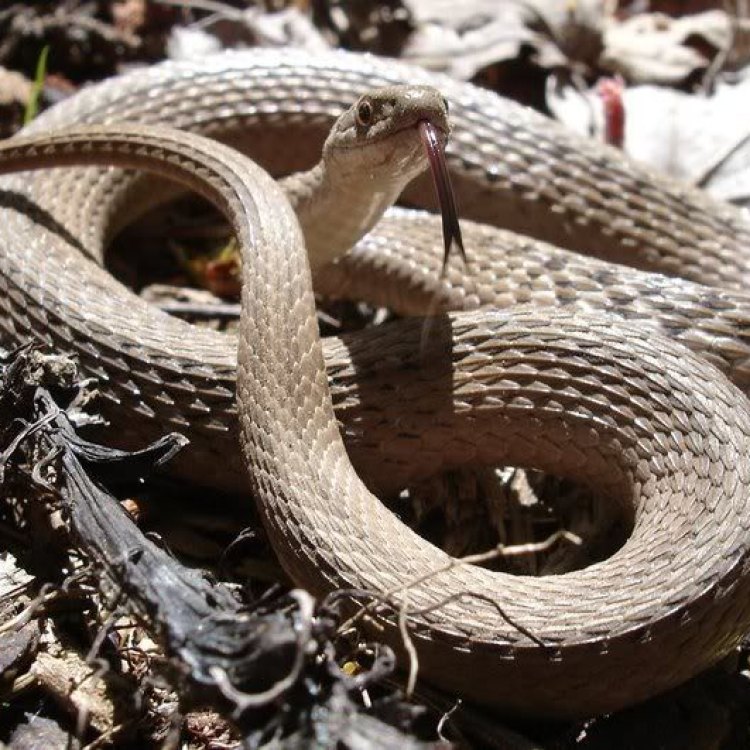
Eastern Brown Snake
- Adult Size: Medium-sized snake
- Average Lifespan: 10 to 15 years
- Reproduction: Oviparous
- Reproductive Behavior: Mating occurs in spring
- Sound or Call: Hisses when threatened
- Migration Pattern: Sedentary
- Social Groups: Solitary
- Behavior: Aggressive when threatened
- Threats: Habitat loss, persecution by humans
- Conservation Status: Least Concern
- Impact on Ecosystem: Controls rodent populations
- Human Use: Not significant
- Distinctive Features: Large eyes, slender body, potent venom
- Interesting Facts: Considered the second most venomous land snake in the world
- Predator: Large birds of prey, dingoes, monitor lizards

Pseudonaja textilis
The Deadly and Fascinating Eastern Brown Snake
The Eastern Brown Snake, also known as the common brown snake, is one of the most feared and misunderstood creatures native to the eastern and central regions of Australia. With its distinctive features and potent venom, this medium-sized snake has captured the imagination of many, and has become a vital part of Australia's ecosystem.Here, we will delve into the world of the Eastern Brown Snake, exploring its physical characteristics, behavior, and impact on both humans and the environment.
Size and Appearance
The Eastern Brown Snake is a medium-sized snake, usually growing to about 4 to 6 feet in length, although some specimens have been known to reach up to 7 feet PeaceOfAnimals.Com. It has a slender body and a relatively small head, with a narrow neck. Its color can range from light grey to dark brown, with some species having a pale stripe on their head.
One of the most distinctive features of the Eastern Brown Snake is its large eyes, which are one of the largest among all Australian snakes. This makes it an expert hunter, with excellent vision and accurate strike ability.
Reproduction and Behavior
The Eastern Brown Snake is oviparous, meaning it lays eggs rather than giving birth to live young. The female snake typically lays between 9 to 14 eggs in the early summer months, with the eggs hatching after an incubation period of about 60 days.
Mating for the Eastern Brown Snake occurs in the spring, with males engaging in combat to win the right to mate with females. Once the eggs are laid, the female leaves them to hatch and does not provide any parental care.
In terms of behavior, the Eastern Brown Snake is solitary and sedentary, meaning it does not migrate and prefers to stay in one place Elf Owl. However, during the mating season, males can be seen actively searching for females.
Threats and Conservation Status
The biggest threats to the Eastern Brown Snake come from habitat loss and human persecution. As urbanization continues to encroach on their natural habitats, these snakes are losing their homes and are often killed out of fear or misunderstanding by humans.
Fortunately, the Eastern Brown Snake is listed as "Least Concern" on the IUCN Red List, as the population is still widespread and considered stable. However, it is still crucial to educate the public about these snakes and the important role they play in their ecosystems.
Impact on Ecosystem and Human Use
The Eastern Brown Snake plays a crucial role in its ecosystem, particularly in controlling rodent populations. As an ambush predator, it often preys on rodents such as mice and rats, helping to keep their numbers in check. This not only benefits the snake, but also helps prevent agricultural damage and the spread of disease.
While the Eastern Brown Snake is not regularly used by humans for any purpose, it is sometimes kept in captivity as a pet. However, this is not recommended, as these snakes require specialized care and handling due to their highly venomous nature.
Distinctive Features and Interesting Facts
Apart from its large eyes, the Eastern Brown Snake also has a thin, elongated body with a pointed head and a slender neck. Its scales are smooth, making it a fast and agile mover. Its venom is highly potent and considered the second most toxic of any land snake in the world, only surpassed by the Inland Taipan, also found in Australia.
Interestingly, the Eastern Brown Snake has a unique and unusual mating behavior. During combat with other males, the snakes perform a "dance" where they intertwine their bodies and push against each other, trying to assert dominance.
Predators
The Eastern Brown Snake faces threats from predators such as large birds of prey, dingoes (wild dogs), and monitor lizards. However, due to their territorial nature and potent venom, they are able to defend themselves effectively against most predators.
The Importance of Understanding and Respecting the Eastern Brown Snake
Despite its fearsome reputation, it is essential to understand and respect the Eastern Brown Snake. While its venom is highly potent and can cause serious harm or even death to humans, these snakes do not actively seek out confrontation and will only strike as a last resort to defend themselves.
In fact, the Eastern Brown Snake benefits humans by controlling rodent populations and is a vital part of Australia's ecosystem. It is crucial to educate the public about these snakes and their importance, as well as to promote conservation efforts to protect their habitats.
In conclusion, the Eastern Brown Snake is a fascinating and deadly creature, with its unique physical features, behaviors, and role in its ecosystem. With proper understanding and respect, humans and these snakes can coexist peacefully, benefiting both parties and preserving the delicate balance of Australia's natural world.
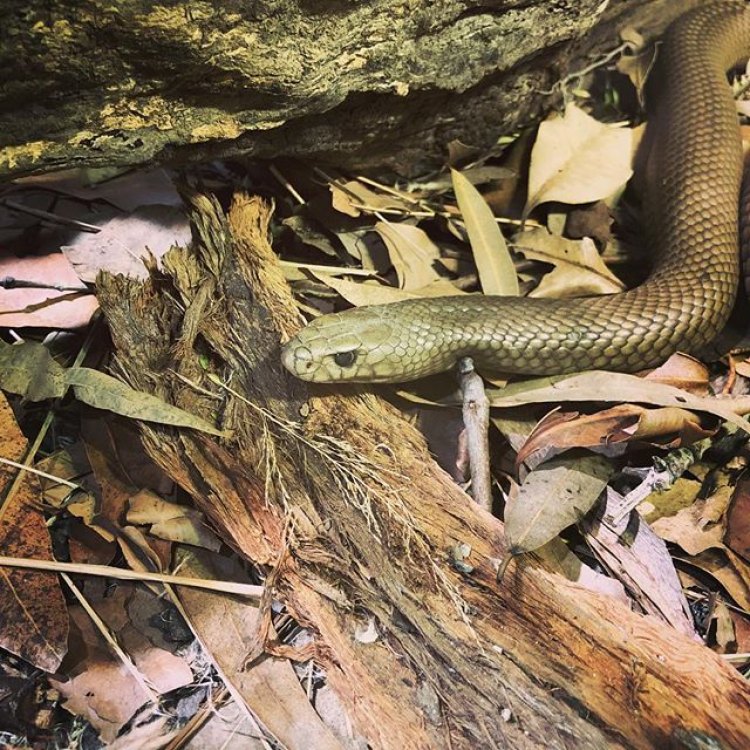
The Deadly and Fascinating Eastern Brown Snake
Disclaimer: The content provided is for informational purposes only. We cannot guarantee the accuracy of the information on this page 100%. All information provided here may change without prior notice.

